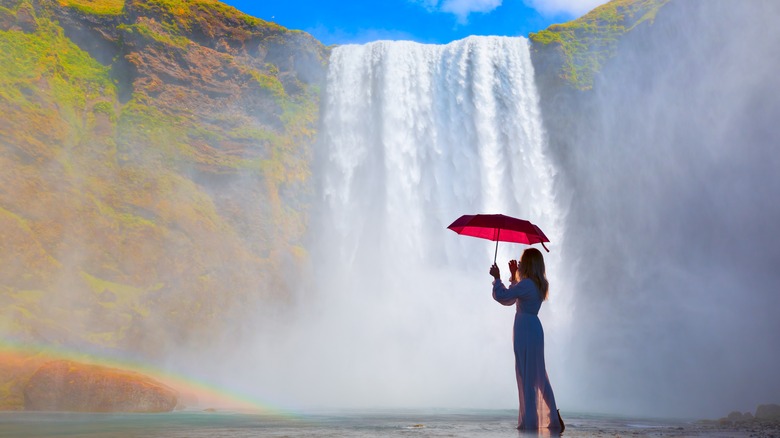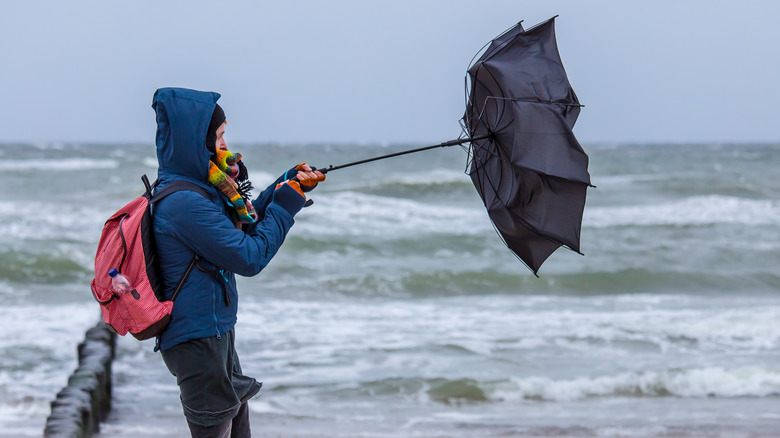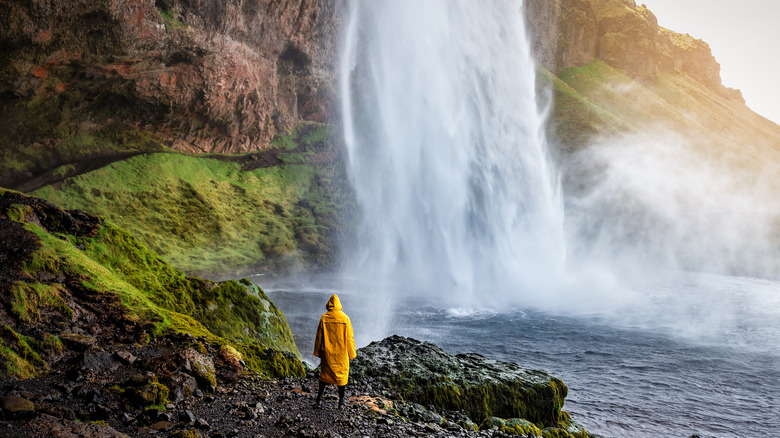Why Tourists Should Just Avoid Packing An Umbrella For A Vacation To Iceland
Exploring the Land of Ice and Fire is something worthy of your bucket list. With a good chance of spotting the northern lights in the winter and the opportunity to enjoy nearly 24 hours of daylight in the summer, there is no bad season to visit Iceland. While Rick Steves suggests packing rain gear no matter what time of year you go, you can leave the umbrella at home.
Iceland's weather is extremely volatile, and it's possible to experience rain, snow, and sunshine all in the same day — or even the same hour. But what you're almost guaranteed to experience is wind so intense that no umbrella stands a chance. In fact, some particularly strong gusts of wind have even shattered car windows or ripped the doors off. Rental companies usually have warning signs or stickers reminding tourists to park facing the wind and to open the door carefully with two hands to avoid damage and safety risks. So, when you're packing to visit this beautiful country, skip the umbrella — or you risk losing it to Njord, the Norse god of the wind and sea.
Why is Iceland so windy?
There are over 150 words in Icelandic to describe the wind, and tourists and locals alike have had dramatic run-ins with Mother Nature during particularly strong storms. The windspeed is usually around 18 mph, but the country has recorded gusts of 160 mph. If you visit during the summer, you should still prepare for high winds, but they're typically strongest in the fall, winter, and spring.
@asasteinars Nothing can prepare you for Iceland weather 😆 #Iceland #storms
Several aspects of the country's geography contribute to its windy reputation. For one, cold winds flow down from the North Pole and make their way to this small island nation in the North Atlantic. Similarly, a low-pressure atmospheric zone known as the Icelandic low sits between Greenland and Iceland, which affects weather patterns and directs high winds east. The stark, volcanic landscape is harsh, and it can be difficult for trees to grow and provide shelter from the wind.
You might think the unrelenting wind would make Iceland the perfect location for renewable energy wind farms, but ironically, there's no need. The country already uses its hydro and geothermal resources to power 100% of its electricity usage, making it one of the few countries with a low carbon footprint.
How to prepare for the weather in Iceland
As the Scandinavians say, there's no such thing as bad weather, only bad clothing. The best way to enjoy your time in Iceland is to pack the appropriate gear. Summers are mild, with peaks of about 68 degrees Fahrenheit — so you won't be sun-tanning on those black sand beaches. The winter may not be as cold as you expect, with the temperature typically hovering around 32 degrees Fahrenheit, thanks to the Gulf Stream. However, if you plan to visit one of the country's many ice caves, get up close to glacier-fed waterfalls, or hike to a volcanic crater, you should bundle up. That windchill can make it feel much colder! It's also wise to waterproof your hiking backpack so you're covered if it rains.
Hiking is one of the most budget-friendly things to do in Iceland and the best way to explore the country's otherworldly landscapes. To ensure you're well prepared in any season, be sure to layer up and pack wool socks, gloves, hats, waterproof pants, thermals, and a reliable windproof rain jacket. Always check for weather warnings and road conditions before you head out, and save the umbrella for a rainy day ... just not in Iceland.


